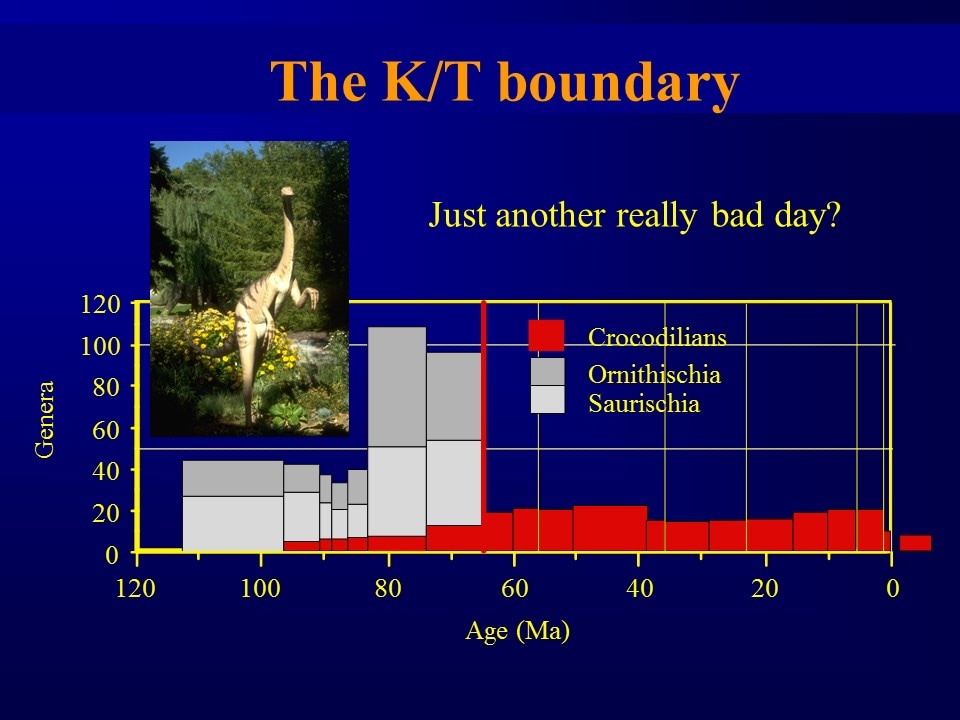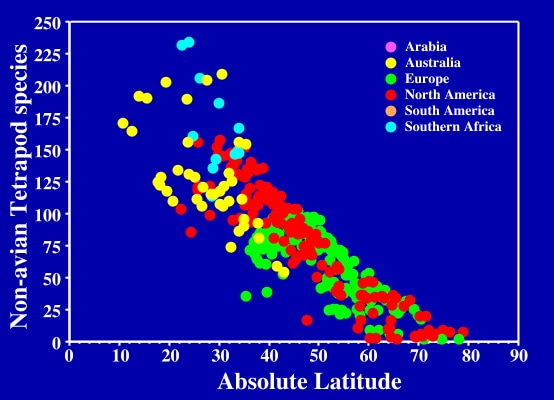What is palaeoecology?
Palaeoecology is the study of the past interactions of organisms with one another and their physical environment. This physical environmental includes the contemporary climate, but not solely, and for this reason it is important to understand the ecology of any potential palaeontogical climate proxy (see Markwick, 1998).
My research interests
My research in this area originated through my work on climate proxies and their use in interpreting palaeoclimate. Part of the problem I wished to address lay with the data itself and how to qualify it (this issue is included in my thesis, and is now also published in a joint paper with Richard Lupia: (Markwick and Lupia, 2002). Although the presence of a climate proxy provides information about the contemporary environment of that location, the absence of a climate proxy need not be of any use at all. Unless, it is qualified as a 'significant' absence, by which I mean that it's absence can be shown to be due to unsuitable climatic conditions. One solution is to use taphonomic control groups (as used by Jablonski for invertebrates and by myself for vertebrates). But for Palaeogene vertebrates, even control groups are largely absent and the question is why?
|
LEFT: Crocodilian biodiversity at the K/T boundary. Based on work for my thesis (Markwick, 1996) but despite changes in taxonomic nomencalture this is probably still indicative of what happened at the end of the Cretaceous. Interestingly, there is a latitudinal heterogeneity in crocodilian extinction at the K/T (Markwick, 1998).
|
Although the link between climate and diversity has been a common theme in the palaeoecological literature (viz., low diversities being intepreted as indicating stressful -- cold, highly saline etc., -- environmental conditions), it is the apparent relationship between latitude and modern diversity that is most intriguing. This has been used to suggest a link between diversity and climate (although not without considerable controversy: see Markwick, 2002 and the references therein). If these diversity gradients did have an underlying cause I surmised that maybe they could be used to address whether the paucity of Palaeogene fossil vertebrates in the high latitudes of Asia and North America was a taphonomic or ecological effect. The consequence was a detailed study of the modern pattern of biodiversity and it's possible relationship with climate, complimented by further studies of palaeobiodiversity patterns
|
Copyright © 2017-2021 Paul Markwick
|
E-mail: [email protected]
|

